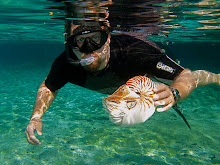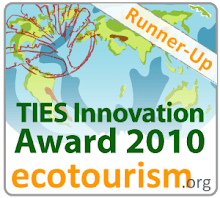 July is usually the time of year I start planning to lead my safari to Kenya and Tanzania. This year I will not be making the journey but I thought I would share with you some images and experiences from past expeditions. I first went to Kenya in 1987 as part of a School for Field Studies wildlife management program. It was on this program that i met one of my closest friends, Todd Palmer. Currently Dr. Todd is a professor at University of Florida, and his research focuses on ant - plant mutualisms, and more recently termite influence on ecosystem structure. I mention this only because it was with Todd that I returned to Kenya in 2002 to help teach field courses to undergraduate students. From 2002 through 2005 we led 5 separate 6-week fields programs, allowing students 3.5 weeks of experiential field based learning opportunity at the Mpala Research Center in Laikipia, 1-week of a community oriented service project, and 1.5-weeks of safari to the Masai Mara, Lake Nakuru, and on the coastal town of Watamu. It was through our experiences with these student groups that I began organizing custom safaris for Oceanic Society and private groups. Since 2004 I have been leading a variety of safaris to Kenya and Tanzania.
July is usually the time of year I start planning to lead my safari to Kenya and Tanzania. This year I will not be making the journey but I thought I would share with you some images and experiences from past expeditions. I first went to Kenya in 1987 as part of a School for Field Studies wildlife management program. It was on this program that i met one of my closest friends, Todd Palmer. Currently Dr. Todd is a professor at University of Florida, and his research focuses on ant - plant mutualisms, and more recently termite influence on ecosystem structure. I mention this only because it was with Todd that I returned to Kenya in 2002 to help teach field courses to undergraduate students. From 2002 through 2005 we led 5 separate 6-week fields programs, allowing students 3.5 weeks of experiential field based learning opportunity at the Mpala Research Center in Laikipia, 1-week of a community oriented service project, and 1.5-weeks of safari to the Masai Mara, Lake Nakuru, and on the coastal town of Watamu. It was through our experiences with these student groups that I began organizing custom safaris for Oceanic Society and private groups. Since 2004 I have been leading a variety of safaris to Kenya and Tanzania. With our student groups we had the opportunity to participate in many interesting research projects, some specifically examining human/wildlife conflicts. In different years we have witnessed capture and radio collaring of various African predators, lions and leopards were two of the more exciting. Now returning with ecotourists groups we have been able to have similar experiences. Unique, up close and personal encounters with nature, and at the same time efforts are made to support local and effective conservation programs in the countries we visit. Part of the fee the participants pay goes directly to a variety of conservancies that have been established to create an economic support system for conservation among local communities. Additionally groups visiting Mpala research center and Chumbe Island in Zanzibar, pay fees that directly support these research centers and their educational programs. These safaris allow the participant to connect through firsthand experiences, with conservation organizations on the ground in Kenya and Tanzania that are directly involved in community driven projects with conservation management objectives at the core of their research.
With our student groups we had the opportunity to participate in many interesting research projects, some specifically examining human/wildlife conflicts. In different years we have witnessed capture and radio collaring of various African predators, lions and leopards were two of the more exciting. Now returning with ecotourists groups we have been able to have similar experiences. Unique, up close and personal encounters with nature, and at the same time efforts are made to support local and effective conservation programs in the countries we visit. Part of the fee the participants pay goes directly to a variety of conservancies that have been established to create an economic support system for conservation among local communities. Additionally groups visiting Mpala research center and Chumbe Island in Zanzibar, pay fees that directly support these research centers and their educational programs. These safaris allow the participant to connect through firsthand experiences, with conservation organizations on the ground in Kenya and Tanzania that are directly involved in community driven projects with conservation management objectives at the core of their research. Along the way our groups share many amazing experiences. Wildlife is obviously what drew many, however it is frequently the people that we interact with along the way, who add a special intimacy to what we are lucky enough to experience. We start in Laikipia, where the largest concentrations of game in all of East Africa (outside of national parks) can be found. We visit Mpala, Ol Pejejeta, and Lewa Downs. From here we depart for Lake Nakuru and then fly to the Masai Mara arriving just in time for the height of the wildebeest migration. After a brief return to Nairobi we depart the following day to Chumbe Island Marine Reserve, off the coast of Zanzibar. After all the dust of safari, it is great to spend three days snorkeling along Chumbe's protected coral reefs and learning about the coastal ecology of Africa.
Along the way our groups share many amazing experiences. Wildlife is obviously what drew many, however it is frequently the people that we interact with along the way, who add a special intimacy to what we are lucky enough to experience. We start in Laikipia, where the largest concentrations of game in all of East Africa (outside of national parks) can be found. We visit Mpala, Ol Pejejeta, and Lewa Downs. From here we depart for Lake Nakuru and then fly to the Masai Mara arriving just in time for the height of the wildebeest migration. After a brief return to Nairobi we depart the following day to Chumbe Island Marine Reserve, off the coast of Zanzibar. After all the dust of safari, it is great to spend three days snorkeling along Chumbe's protected coral reefs and learning about the coastal ecology of Africa. I hope you might join us on a future safari, please feel free to contact me for more information. In the meantime click on this link for a slide show from last years safari. I am planning two summer eco-safaris for 2011. In future posts I will include more details about specific parts mentioned above.























